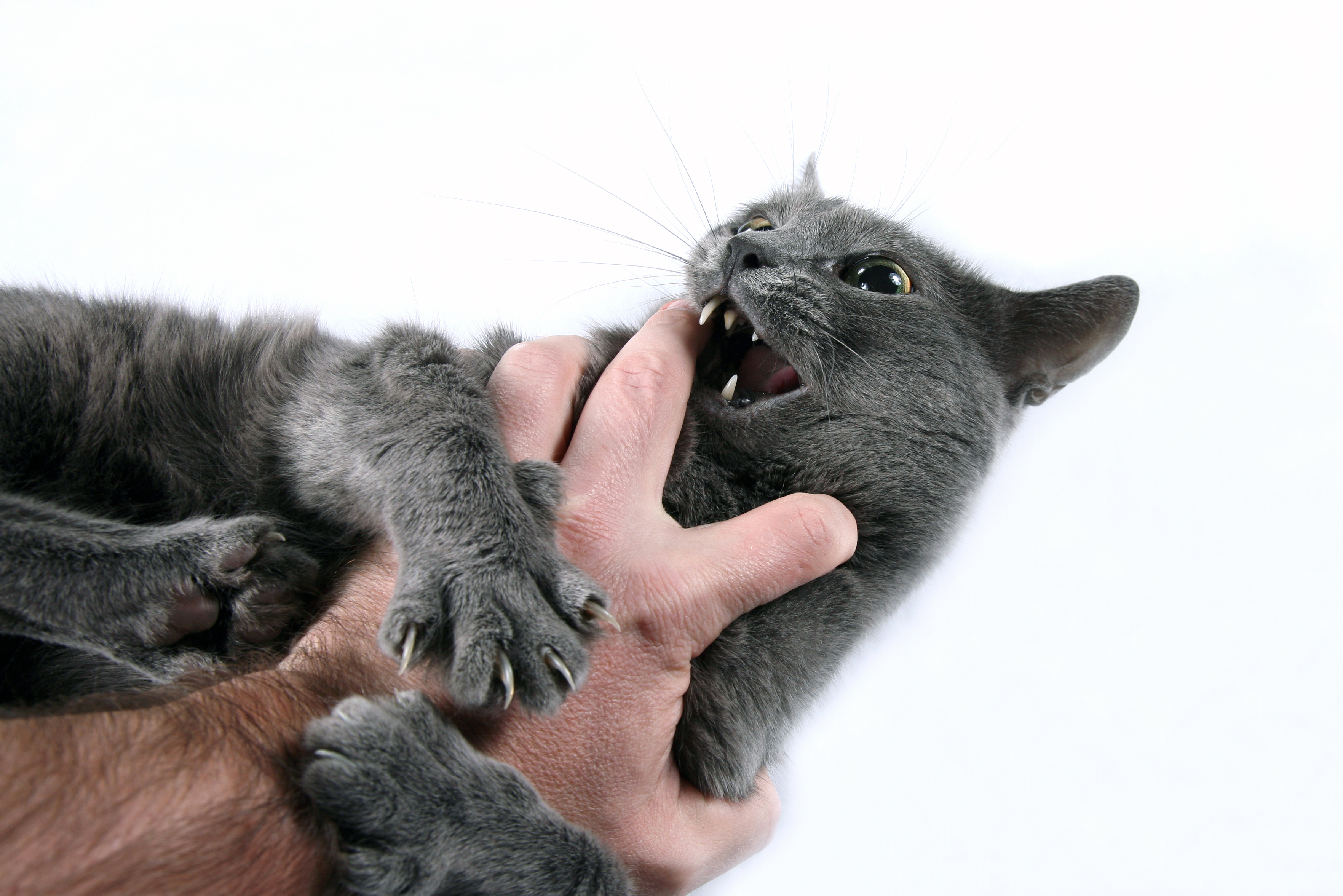
You love your kitty, and he’s normally a very sweet cat. You can cuddle with him, he sleeps on your bed, he stays off the counters, and he makes the cutest little purrs and meows. But then, a flip gets switched and the predator comes out! You might be playing with him and all of a sudden he latches on to your hand and chomps down on you with his teeth…hard. Or you’re walking down a hallway and are ambushed by a small flash of furry terror and your ankles have fallen prey to a mighty hunter. Ouch! What gives? How can a cat be so sweet one minute and such a ferocious bringer-of-pain the next? Are you a victim of play aggression in cats, and if so, can the situation be improved?
Cats can exhibit play aggression for a number of reasons. First, cats who have been taken away from their mother and/or siblings too early may be unaware that they are actually hurting you – they never learned about “bite inhibition”. During play that gets too rough with mom or siblings, kittens will squeal or swat back, or mom may put the rough-houser in his place and walk away. Withdrawing attention is one of the ways mom teaches her kittens that if they can’t get her attention gently, they don’t get any attention, period. So, young kitties learn pretty early on that the best way to play and get positive attention is to play nicely…unless there is no one to teach them. Therefore, the task of teaching now falls on you, and it isn’t always easy.
Second, YOU could unintentionally be training your cat to play rough. Are you playing with your cat using your hands? If so, your cat is learning that your hands are toys…she makes no distinction between that catnip mouse that she can chomp on and your fingers, which belong to you and can feel pain. So, make it a rule to NEVER use your hands or feet or any other body part as a toy! Always use a wand toy, or some kind of inanimate object to play with your kitty.
Lastly, your cat is a carnivorous predator by nature. As such, she has certain instinctual drives, or biological impulses to perform certain actions when anything she deems prey enters her view and she’s in the mood to strike. How can you curb this? Reduce her need to strike out at inappropriate “prey” items (like your ankles) and give her appropriate outlets (like toys) on a regular basis. Cats need to run around and spend energy, otherwise they can become bored or develop health problems, both of which can result in behavior issues (you can read more about this and how play and toys help HERE). Give your cat two play sessions each day with a wand toy and really wear her out! She will learn what acceptable “prey” items are, and if you give her an outlet for her energy, her urge to attack inappropriate items will be reduced.
Here are a few tips to keep you on track:
- NEVER play with your cat using your hands. Always use a toy instead.
- Play with your cat twice a day using a wand toy to wear her out. End the play session with a treat or a meal.
- If your house-tiger has a habit of stalking you or other animals in the home, put a bell on her collar so that the would-be victims know when she’s around and can ward off an attack.
- If your kitty likes to ambush you from various rooms as you walk past, you can keep a little jar of small cat toys nearby and toss a toy down the hallway before you proceed so that your domestic predator attacks the toy instead of you.
- If you do get attacked, try to go limp (this is very difficult and does take practice). Resist the urge to yank your hand away, which can cause more injury. If your hand goes limp, the cat will often wonder what has happened and stop. If your cat does not let go, GENTLY blow on her nose. Do not yell or hit the cat, but you might say firmly, OUCH. When you are untangled, get up and walk away.
- Try to anticipate when your kitty might become aggressive if you are petting her or engaging in play. If you sense (through her movements or body language) that aggressive behavior is imminent, stop what you are doing, and walk away.
The best thing you can do is be aware of what actions and signals may be encouraging aggressive play. Being aware of triggers or activities that can cause aggressive behavior is key, and giving your cat appropriate outlets for play and energy release will help reduce the chances of you falling victim to predatory and play aggression in cats.

